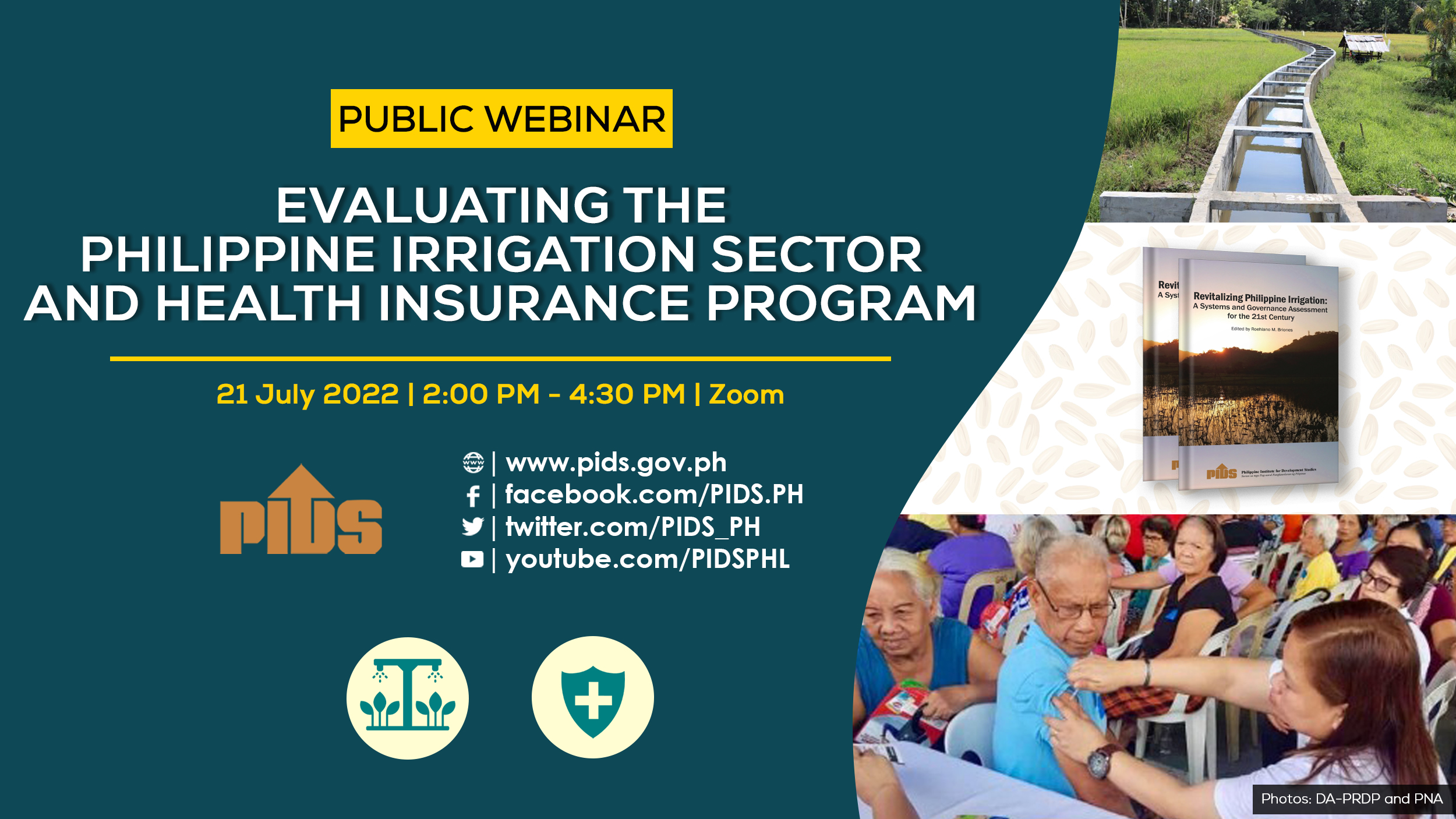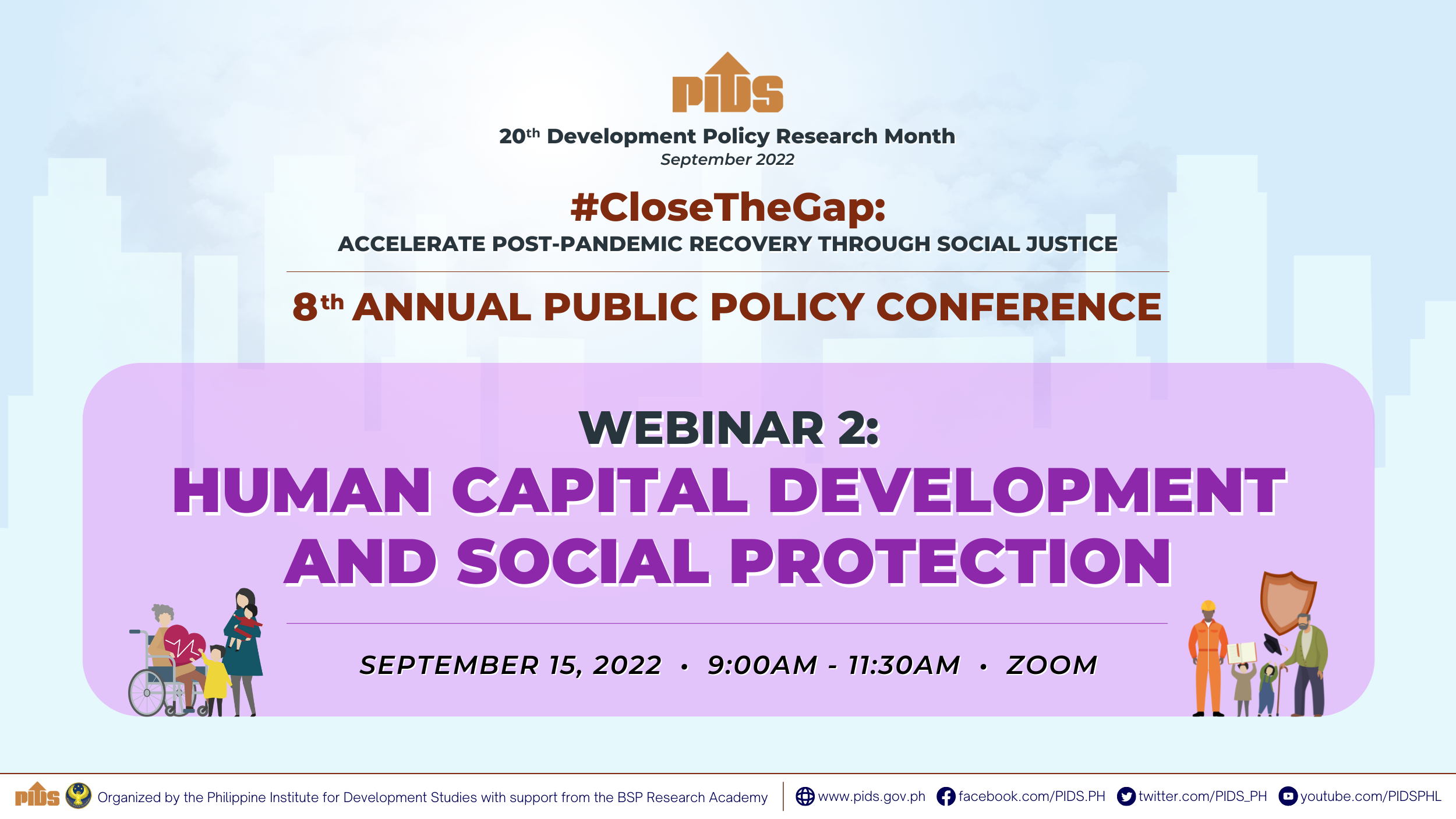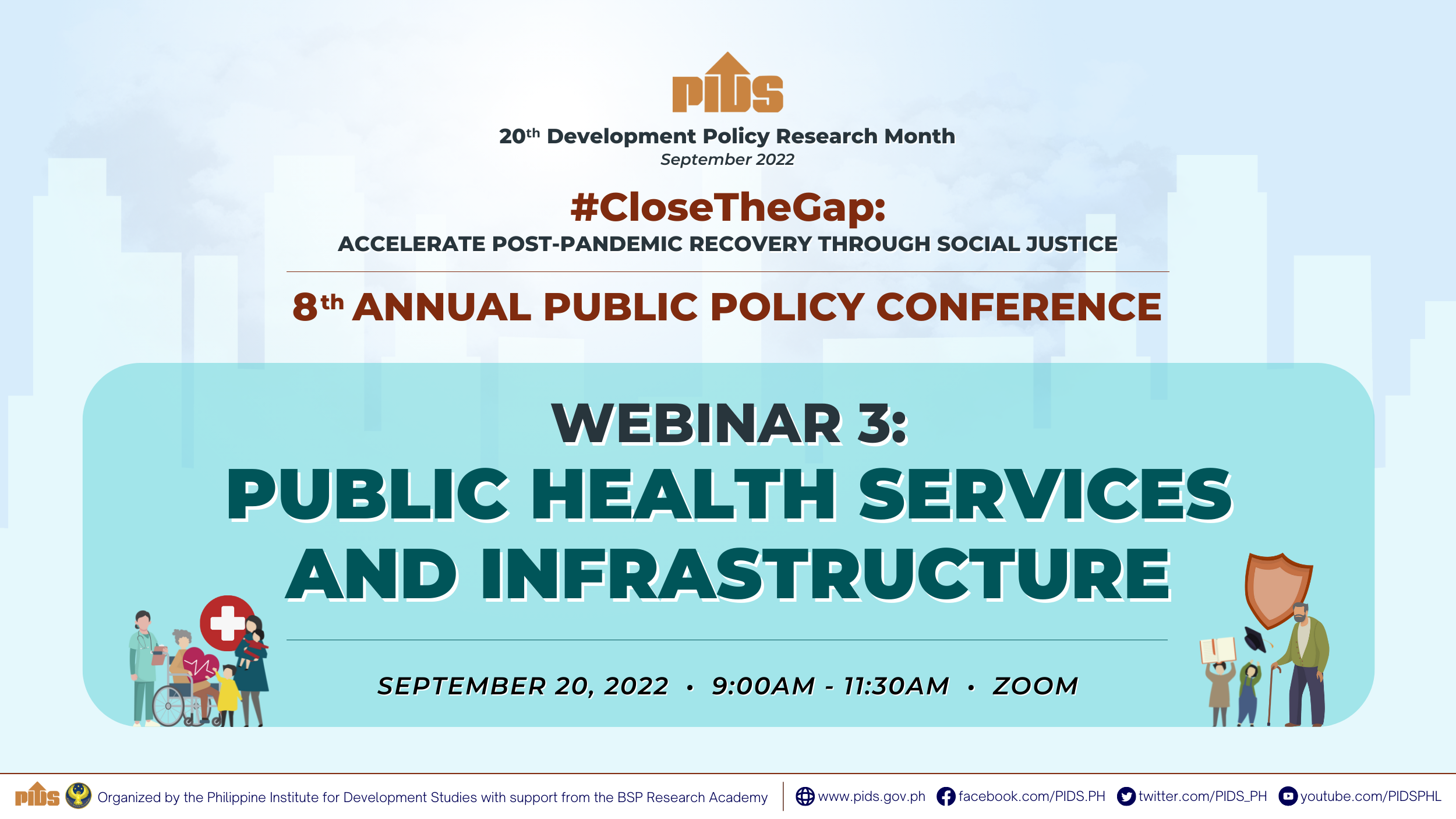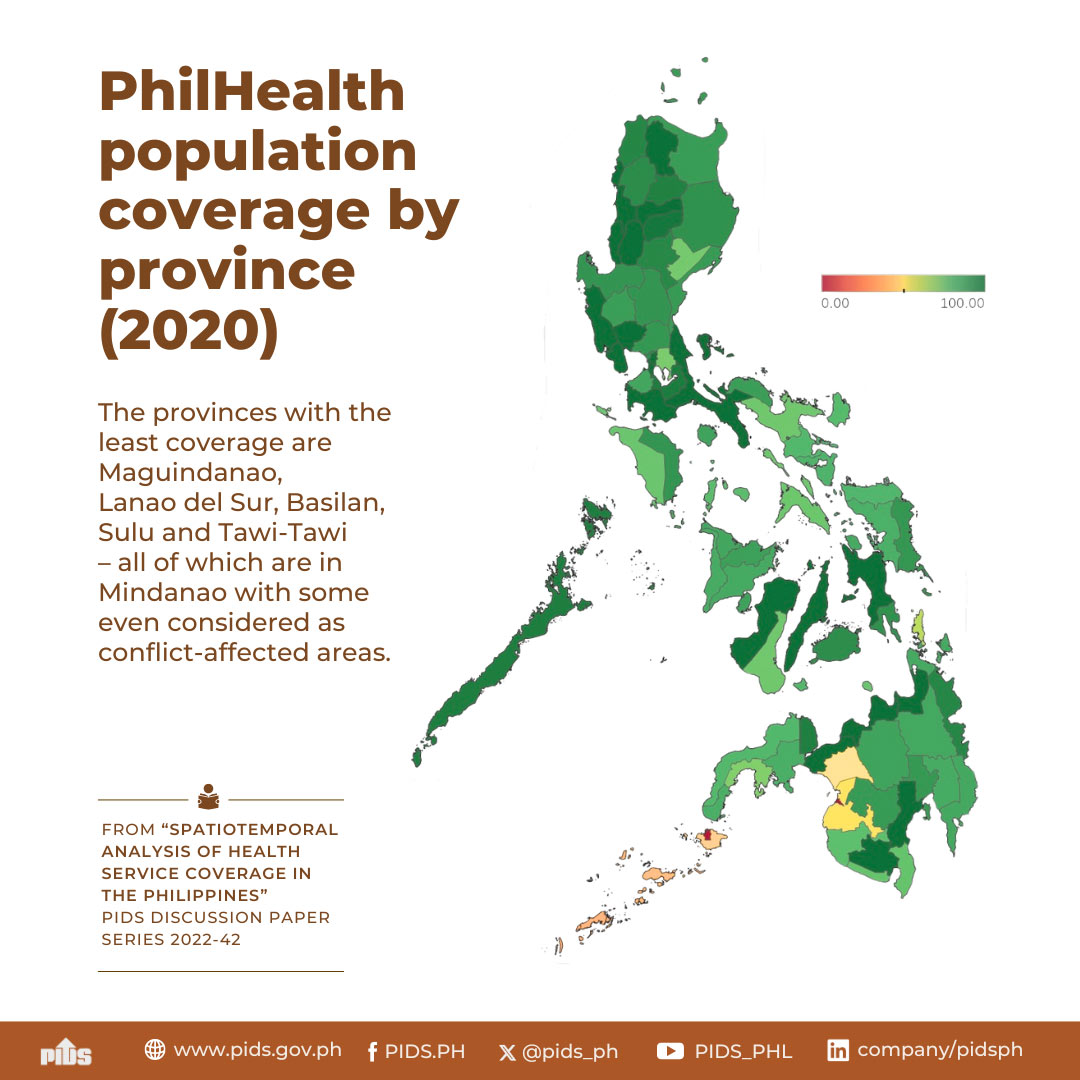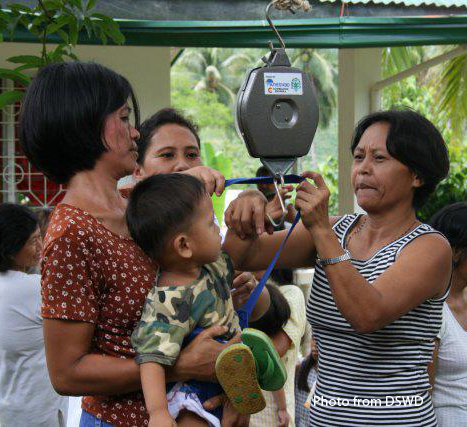
Filipino children from poor households who are part of the government’s health insurance program have increased access to health care, both for preventive and curative care.
A recent study published by state think tank Philippine Institute for Development Studies (PIDS) recognized the role that the Pantawid Pamilyang Pilipino Program (4Ps) has played in this positive impact. The 4Ps automatically enrolls beneficiaries to the country’s social health insurance program and requires preventive check-ups for children aged 0 to 5 years old.
In the discussion paper, authors PIDS Senior Research Fellow Michael Abrigo and Visiting Research Fellow Vicente Paqueo explained that, while there is no direct impact on morbidity, the results suggest that “the social health insurance and the CCT program, jointly, were able to induce greater hospital visits for both preventive and curative care, and lower out-of-pocket expenditures.”
Access to health care in developing countries is challenging. In the case of the Philippines, efforts to provide better health care can be traced back to as early as in the 70s. It has undergone various improvements, especially with the establishment of the Philippine Health Insurance Corporation (PHIC) in 1995.
According to the study, Filipino children who are insured are 8.7 to 12.8 percent more likely to visit a healthcare facility, compared to those who are non-insured. Furthermore, sick children who are insured are more likely to visit a health-care facility by about 18 to 30 percent, while those who are not sick are more likely to visit a health-care facility by 5.9 to 8.3 percent when they are insured.
On the other hand, the authors noted the limited impact on preventive health care based on 2013 data, saying that the PHIC’s benefit packages for primary care checkups of sponsored members were “neither as extensive, generous, nor as well established” compared to inpatient care.
In terms of health costs, the study observed a significant reduction in out-of-pocket spending and found that “insured children are 9.2 to 38.6 percent less likely to pay out-of-pocket expenses compared to non-insured children, depending on specification.”
However, in terms of patient satisfaction, the study revealed that while there is an overall increase in the demand for health care, insured Filipino children from poor households “have lower propensity to indicate that they were satisfied with the service that they have had received during confinement.”
Abrigo and Paqueo added that they are more likely to cite having uncaring or rude staff or unfair treatment as reasons, as well as the lack of availability of other health inputs, insufficient medicines, equipment, and staff.
They also noted that insurance coverage alone is insufficient to improve access to health care and that there should be a confluence of three elements, namely, income effect, price effect, and information spillover, in designing better social health insurance programs. ###
This press release is based on the PIDS discussion paper titled “Social Protection and Access to Health Care among Children in the Philippines”.
A recent study published by state think tank Philippine Institute for Development Studies (PIDS) recognized the role that the Pantawid Pamilyang Pilipino Program (4Ps) has played in this positive impact. The 4Ps automatically enrolls beneficiaries to the country’s social health insurance program and requires preventive check-ups for children aged 0 to 5 years old.
In the discussion paper, authors PIDS Senior Research Fellow Michael Abrigo and Visiting Research Fellow Vicente Paqueo explained that, while there is no direct impact on morbidity, the results suggest that “the social health insurance and the CCT program, jointly, were able to induce greater hospital visits for both preventive and curative care, and lower out-of-pocket expenditures.”
Access to health care in developing countries is challenging. In the case of the Philippines, efforts to provide better health care can be traced back to as early as in the 70s. It has undergone various improvements, especially with the establishment of the Philippine Health Insurance Corporation (PHIC) in 1995.
According to the study, Filipino children who are insured are 8.7 to 12.8 percent more likely to visit a healthcare facility, compared to those who are non-insured. Furthermore, sick children who are insured are more likely to visit a health-care facility by about 18 to 30 percent, while those who are not sick are more likely to visit a health-care facility by 5.9 to 8.3 percent when they are insured.
On the other hand, the authors noted the limited impact on preventive health care based on 2013 data, saying that the PHIC’s benefit packages for primary care checkups of sponsored members were “neither as extensive, generous, nor as well established” compared to inpatient care.
In terms of health costs, the study observed a significant reduction in out-of-pocket spending and found that “insured children are 9.2 to 38.6 percent less likely to pay out-of-pocket expenses compared to non-insured children, depending on specification.”
However, in terms of patient satisfaction, the study revealed that while there is an overall increase in the demand for health care, insured Filipino children from poor households “have lower propensity to indicate that they were satisfied with the service that they have had received during confinement.”
Abrigo and Paqueo added that they are more likely to cite having uncaring or rude staff or unfair treatment as reasons, as well as the lack of availability of other health inputs, insufficient medicines, equipment, and staff.
They also noted that insurance coverage alone is insufficient to improve access to health care and that there should be a confluence of three elements, namely, income effect, price effect, and information spillover, in designing better social health insurance programs. ###
This press release is based on the PIDS discussion paper titled “Social Protection and Access to Health Care among Children in the Philippines”.







